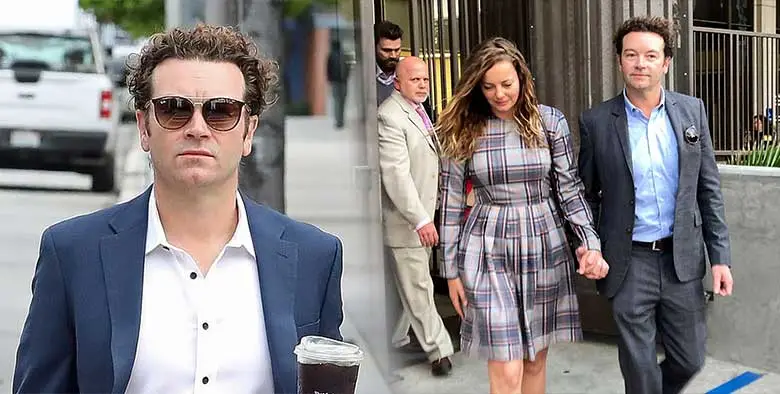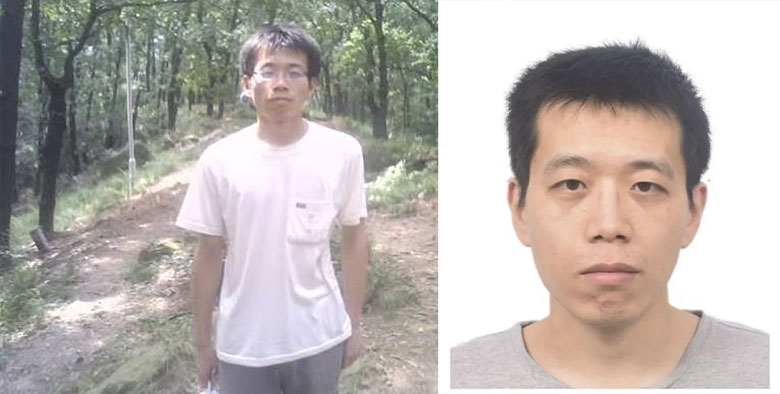- Know Everything About Nipah Virus, Which Is Back In Kerala Again
- Kevin Porter Jr Arrested On His Girlfriend’s Assault Charge
- Market Change Overnight - Know The 8 Things That Did It
- Who Are Alba Baptista And Chris Evans Married On The Weekend?
- Disrupted India vs Pakistan Asia Cup 2023 Match on Reserve Day
- 10 Common Foods That Contain No Calories or Are Very Low in Calories
- Men’s Styling Tips - Know the 9 Common Style Mistakes to Avoid
- Coco Gauff Beats Karoline Muchova and Reaches the US Open Final
- Danny Masterson Gets Life Sentence of 30 Years for Two Rapes
- Experience A Splendid Vacation in Kashmir with These 15 Gorgeous Sights
- India
- Saturday , May 11, 2024
- Last Published Sep 12, 2023, 6:48:32 PM

Explained: 8 Alternative Cancer Treatments
Many cancer patients are interested in trying anything to help them, including complementary and alternative cancer treatments. However, many alternative cancer treatments are not proven, and some may even be dangerous.
Here are a few alternative cancer treatments that are generally safe so that you can sort out the good from the bad. They have some benefits, too.
What are the benefits of alternative medicine for cancer patients?
Alternative medicine means that this is not the allopathic primary treatment method used by oncologists. There is no evidence that alternative medicine has cured cancer, but it has been shown that people who took allopathic cancer treatment along with alternative medicine showed better results. These cancer patients could manage the symptoms better, showed betterment quickly, and had a better mental approach to the entire cancer treatment itself according to the CancerResearchUK.
Alternative treatments have helped cancer patients deal with symptoms and pain management, usually caused by cancer treatment. These symptoms might include anxiety, tiredness, vomiting, headache, hair fall, nausea, loss of appetite, sleeplessness, stress, etc.
Many cancer-related symptoms can be relieved by using these integrative medicine approaches combined with standard allopathic cancer treatments.
Nevertheless, alternative treatments generally aren't powerful enough to replace standard allopathic treatments completely. To learn more about the standard of care cancer treatments, you can refer to DCode Care for cancer treatment hospitals. They simplify cancer care for patients by guiding them through every step of cancer treatment, from diagnostics, treatment, and recovery.
 Let’s understand each of these alternative treatments in detail.
Let’s understand each of these alternative treatments in detail.
1. Ayurveda:
 Illness is seen as an imbalance between a person’s lifestyle and many other factors, such as personal relationships, lifestyle, and diet. Therefore, Ayurveda’s main goal is to restore balance and strength to achieve harmony and wellness.
This is done using approaches like:
Illness is seen as an imbalance between a person’s lifestyle and many other factors, such as personal relationships, lifestyle, and diet. Therefore, Ayurveda’s main goal is to restore balance and strength to achieve harmony and wellness.
This is done using approaches like:
- Food and diet are essential in Ayurveda. It recommends that you eat or don’t eat certain foods to help balance manage your cancer symptoms
- Ayurveda herbal treatments are often a mixture of many different types of herbs. They may come as pills, teas, or oils to be used on the skin. Various combinations of herbs are used, to relieve cancer treatment side effects and symptoms
- Cleansing, or detoxifying, the body to help balance the doshas. For example, they may combine oils and herbs that make you sweat or vomit. Other ways of cleansing include using laxatives or enemas nasal washing.
- Yoga and meditation increase spiritual awareness and help balance mental and physical health.
2. Homeopathy:
In the current scenario of medical sciences, homeopathy, the most popular therapy system, is recognized as one of the components of complementary and alternative medicine across the world. Despite a long debate continuing whether homeopathy is just a placebo or more than it, homeopathy has been considered a safe and cost-effective therapeutic method. Available data suggest that homeopathy has the potency to reduce the side effects caused by standard therapeutic modalities like chemotherapy, radiotherapy, or surgery.
Homeopathy can effectively manage mild cancer symptoms and cancer treatment side effects but not in treating cancer as a whole.
Available data suggest that homeopathy has the potency to reduce the side effects caused by standard therapeutic modalities like chemotherapy, radiotherapy, or surgery.
Homeopathy can effectively manage mild cancer symptoms and cancer treatment side effects but not in treating cancer as a whole.
3. Physiotherapy:
One of the primary ways physiotherapy can help is to address cancer-related tiredness, one of the most common side effects for those undergoing treatment. Pain management is another important area that physiotherapists can help almost all patients with. There are many ways that cancer can lead to physical pain. One is the location of cancer itself. Another is that reduced mobility can result in stiffness in the joints or muscles. Finally, peripheral neuropathy is nerve dysfunction that causes pain due to damaged nerves. Physiotherapy can address issues like these by tackling them head-on with treatments like massages or mobilization therapy and teaching patients how to avoid triggering pain. Another side-effect of some cancer treatments is lymphedema, the swelling of body parts due to fluid retention. This usually occurs in the limbs or the body part affected by cancer. This fluid is retained if the lymphatic system is damaged, which can occur due to scarring due to surgery or radiation therapy, infection, or cancer itself.
While the number of possible routes to deal with cancer can sometimes seem overwhelming, physiotherapy can help patients build a foundation of strength to pursue as many of these options as possible, enabling them to pursue all possible routes for beating the disease. Exercises and using special bandaging techniques.
While physiotherapy is not used to address cancer itself, it can be an extremely effective way of helping patients maintains their quality of life.
Another side-effect of some cancer treatments is lymphedema, the swelling of body parts due to fluid retention. This usually occurs in the limbs or the body part affected by cancer. This fluid is retained if the lymphatic system is damaged, which can occur due to scarring due to surgery or radiation therapy, infection, or cancer itself.
While the number of possible routes to deal with cancer can sometimes seem overwhelming, physiotherapy can help patients build a foundation of strength to pursue as many of these options as possible, enabling them to pursue all possible routes for beating the disease. Exercises and using special bandaging techniques.
While physiotherapy is not used to address cancer itself, it can be an extremely effective way of helping patients maintains their quality of life.
4. Naturopathy:
Naturopathic medicine is a system of healing that focuses on supporting and stimulating the body’s ability to heal itself. Naturopathic medicine takes a holistic approach, which focuses on the whole person rather than on a person’s illness. Naturopathic doctors combine traditional and natural therapies with modern scientific knowledge. They are trained in and use a wide variety of different treatments.
Naturopathic medicine treatments may include special diets and nutritional counseling, fasting, enemas, and herbal, vitamin or mineral remedies.
Naturopathy has helped cancer patients to improve their mental health, overcome stress and trauma & relieve pain.
While physiotherapy is not used to address cancer itself, it can be an extremely effective way of helping patients maintains their quality of life.
Naturopathic doctors combine traditional and natural therapies with modern scientific knowledge. They are trained in and use a wide variety of different treatments.
Naturopathic medicine treatments may include special diets and nutritional counseling, fasting, enemas, and herbal, vitamin or mineral remedies.
Naturopathy has helped cancer patients to improve their mental health, overcome stress and trauma & relieve pain.
While physiotherapy is not used to address cancer itself, it can be an extremely effective way of helping patients maintains their quality of life.
5. Acupuncture:
Acupuncture is usually done with very thin stainless steel needles. The needles are inserted into your skin at certain acupoints. The acupuncturist decides which acupoints to treat and how many needles will be used. Once inserted, the acupuncturist may twirl or move the needles up and down. The needles are left in place for a time, often several minutes, while you lie on the treatment table. Acupoints may be unblocked in other ways, such as with fingers (acupressure), light beams (laser), weak electrical currents (electroacupuncture), or ultrasound.
Acupuncture has shown results in managing pain and stress during cancer treatment.
Acupoints may be unblocked in other ways, such as with fingers (acupressure), light beams (laser), weak electrical currents (electroacupuncture), or ultrasound.
Acupuncture has shown results in managing pain and stress during cancer treatment.
6. Exercising:
Exercising with cancer pain doesn't have to be strenuous. Practicing simple exercises, such as walking, can help you manage both cancer symptoms and cancer pain. Exercise for cancer pain (and cancer):- boosts energy levels
- decreases tiredness
- helps you maintain a healthy weight
- relieves stress
- strengthens muscles, particularly necessary if you've lost muscle during cancer treatment
 A consistent, gentle workout routine for cancer pain is key; avoid doing high-intensity exercises, such as heavy weight lifting, at least initially or when the cancer treatment is going on.
There are numerous low-impact exercise options. For aerobic exercise, you can swim; for a strengthening exercise, you can do lightweight lifting; and for a flexibility exercise, you can do yoga.
You may want to break up your exercise into smaller segments throughout the day to make it easier on yourself. For example, if your goal is to exercise for 30 minutes a day, you can break it up into three 10-minute segments. Again, do what works for you.
Apart from giving your body a physical boost, exercising regularly can help you deal with stress and improve your mental health.
It's normal to have some soreness after beginning an exercise routine, especially within the first few days. However, if your cancer pain gets worse or you develop new symptoms, stop exercising and call your doctor immediately. Don't ignore the pain.
A consistent, gentle workout routine for cancer pain is key; avoid doing high-intensity exercises, such as heavy weight lifting, at least initially or when the cancer treatment is going on.
There are numerous low-impact exercise options. For aerobic exercise, you can swim; for a strengthening exercise, you can do lightweight lifting; and for a flexibility exercise, you can do yoga.
You may want to break up your exercise into smaller segments throughout the day to make it easier on yourself. For example, if your goal is to exercise for 30 minutes a day, you can break it up into three 10-minute segments. Again, do what works for you.
Apart from giving your body a physical boost, exercising regularly can help you deal with stress and improve your mental health.
It's normal to have some soreness after beginning an exercise routine, especially within the first few days. However, if your cancer pain gets worse or you develop new symptoms, stop exercising and call your doctor immediately. Don't ignore the pain.
7. Music therapy:
Music therapy is the use of music as a way to help people express and cope with difficult feelings. In addition, it can encourage contact and communication with other people and help ease some physical symptoms. During music therapy, you listen to music or use musical instruments under the guidance of a music therapist. Other types of music therapy include singing and writing songs. You don’t need to have any musical ability or experience to benefit from music therapy. It is thought that our brain and body respond naturally to sound, including the rhythm and beat of the music. Some studies suggest that music therapy can help relieve nausea and vomiting caused by chemotherapy when it is used along with anti-nausea medicines. It may also help reduce pain and discomfort, but not all studies have shown this effect.
There is evidence that music therapy can help people relax and can reduce stress and anxiety. Other studies suggest that it may improve the quality of life for people living with cancer.
Some studies suggest that music therapy can help relieve nausea and vomiting caused by chemotherapy when it is used along with anti-nausea medicines. It may also help reduce pain and discomfort, but not all studies have shown this effect.
There is evidence that music therapy can help people relax and can reduce stress and anxiety. Other studies suggest that it may improve the quality of life for people living with cancer.
8. Meditation:
One of the most important parts of meditation is conscious breathing, or being aware of the way that you breathe. Taking regular, slow, deep, and quiet breaths helps to calm your body and mind. It’s believed that this type of breathing will help lower blood pressure and help reduce stress and anxiety. Many people try different types of meditation to see what works best for them. You may find it hard to meditate at first, but most people get better with practice. You can practice meditation once or twice a day for short time periods of 10 or 15 minutes or for longer periods of time. Some meditative practices have a religious or spiritual component, while others do not. For example, you can focus on love or being thankful, or you can reflect on a poem or a piece of artwork that you find inspiring.
There is no evidence at this time that meditation can treat cancer itself. However, people often use meditation to relax and cope with stress and anxiety.
Research studies suggest that regular meditation can help reduce chronic pain, anxiety, and problems sleeping. It can also help lower blood pressure and improve mood in people living with cancer.
Why do cancer patients trust DCode Care to choose the right treatment?
Simplify your hospital search by using DCode Care for cancer treatment hospitals. Their cancer counselors are well trained to guide cancer patients along the entire treatment journey.
DCode Care puts patients and caregivers at the center of the treatment journey. Basis each person’s personal preference, clinical case, and financial abilities the cancer counselor helps a patient in choosing the right hospital, oncologist, and pathway for the right cancer treatment.
Disclaimer: It is advisable for cancer patients to try any of the above suggested alternative cancer treatments after doctor’s discretion.
Some meditative practices have a religious or spiritual component, while others do not. For example, you can focus on love or being thankful, or you can reflect on a poem or a piece of artwork that you find inspiring.
There is no evidence at this time that meditation can treat cancer itself. However, people often use meditation to relax and cope with stress and anxiety.
Research studies suggest that regular meditation can help reduce chronic pain, anxiety, and problems sleeping. It can also help lower blood pressure and improve mood in people living with cancer.
Why do cancer patients trust DCode Care to choose the right treatment?
Simplify your hospital search by using DCode Care for cancer treatment hospitals. Their cancer counselors are well trained to guide cancer patients along the entire treatment journey.
DCode Care puts patients and caregivers at the center of the treatment journey. Basis each person’s personal preference, clinical case, and financial abilities the cancer counselor helps a patient in choosing the right hospital, oncologist, and pathway for the right cancer treatment.
Disclaimer: It is advisable for cancer patients to try any of the above suggested alternative cancer treatments after doctor’s discretion. Disclaimer - The texts with tips or advice mentioned here are only for generic information, but not for a substitute of medical advice. Before applying any advice or tips, you should consult a respective doctor or expert. ATT is not responsible if you have any bad impacts on your health.












